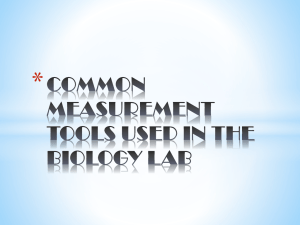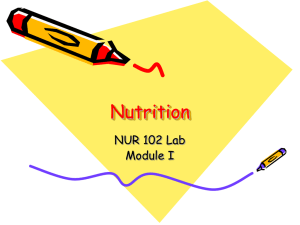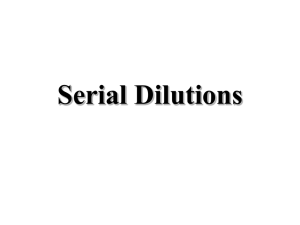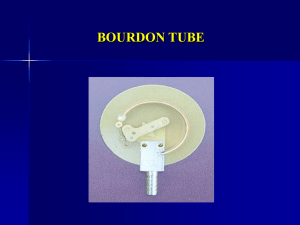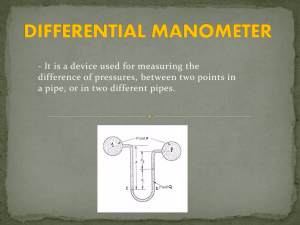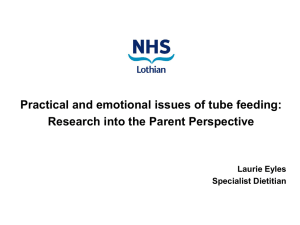gastrointestinal intubations
advertisement
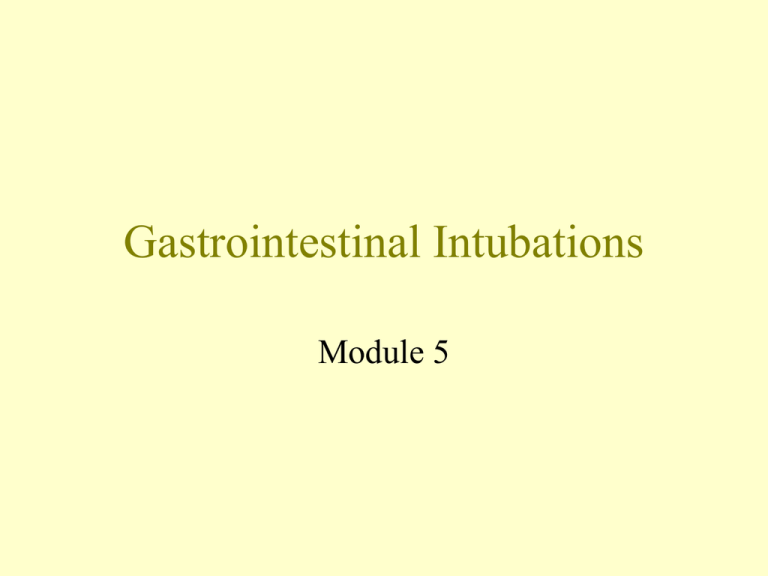
Gastrointestinal Intubations
Module 5
Gastrostomy
• Surgical creation of a gastric fistula through the
abdominal wall, necessary in some cases of
cicatricial stricture of the esophagus for the purpose
of introducing food into the stomach.
Percutaneous endoscopic gastrostomy (PEG)
• A feeding ostomy. PEG tubes are inserted through
the esophagus into the stomach with the aid of an
endoscope and then pulled through a stab wound
made in the abdominal wall.
Nasogastric
• the nostril to the nasopharynx and to the stomach
Ileus
• failure of appropriate forward movement of bowel
contents. It may be secondary to either mechanical
obstruction of the bowel or a disturbance in neural
stimulation (adynamic ileus).
Paralytic ileus
• paralysis of the gut due to peritoneal contamination by
pus (from a perforated appendix) or acid (from a
perforated ulcer);
• Underlying condition must be treated appropriately
• Can also follow spinal cord injuries, pneumonia, and
other general conditions. May occur after any
abdominal surgery & can be a anticholinergic side
effect of certain psychotropic drugs.
• Usually temporary, with distention & symptoms of
acute obstruction
Gastrointestinal Tubes
• Can be inserted via
– Nose
– Stomach
• Many types can be inserted by nurses,
but some of the larger, longer or
multiple lumen tubes must be inserted
by physicians or nurses with advanced
training
• Improper tube placement can
lead to serious complications:
–Esophagotracheal fistula
–Gastric ulceration
–Esophageal or gastric
perforation
–Aspiration pneumonia
GI tubes
• May be inserted for the purpose of
– Instilling liquid foods or other substances
– Establish a means for suctioning stomach
contents to prevent gastric distention, nausea
& vomiting
– To obtain stomach contents for lab work
– To lavage stomach in cases of poisoning or
overdoses
– Gastric decompression (to remove gas and
or fluid)
Enteral Access devices
• Access can be achieved via various routes
– Nasogastric = inserted thru 1 of nostrils down
nasopharnyx to alimentary tract (may also go mouth
down but causes gagging++ and discomfort, more often
in premies)
– Nasoenteric inserted same as Nasogastric but extends
down into upper small intestine (used with those with
high risk of aspiration)
– Gastrostomy, Jejunostomy = for longer term and
placed via placement thru abd wall into stomach
(gastrostomy) or into jujumen (Jejunostomy)
• Nasoenteric tube (NET) is generally
indicated for short-term therapy
(< 6wks)
• More permanent enterostomal
devices for nutrition, such as a
gastrostomy or jejunostomy tube, is
appropriate for therapy expected to
last a month to 6 weeks or more.
Types of GI tubes
Large Bore used for gastric decompression or analysis, or
rarely for short-term feeding
• Levin = single lumen tube Size 12 to 18F
• Salem = double lumen, larger lumen for draining of gastric
contents, smaller allow for inflow of air to prevent a
vacuum if tube adheres to stomach wall
Small Bore
• Nasogastric/feeding tubes – size 6 to 12F and 30-60 inches
long
Intestinal Tubes for decompression Hg-weighted balloon
tips facilitate passing the tube beyond the stomach primarily
for intestinal decompression (10 feet long)
• Harris, Cantor or Miller Abbot
Smaller diameter
• Smaller diameter tubes
– Clog easier esp with thick feeds or when
meds are tabs that have been crushed
– Can also be dislodged by vomiting or
coughing
– Can become knotted or kinked in GI tract
– If not flushed before and after, easily
become clogged requiring a change of tube
– More difficult to check residual volumes
Tubes for
decompression
• Tubes made of polyurethane or
silicone
–Radiopaque so position visible
by x-ray
• Tubes made of rubber or
polyvinyl chloride stiffen with
time
Procedures
•
•
•
•
Inserting a NG tube – Kozier p. 1149
Removing NG tube – Kozier p. 1152
Managing GI suction – Kozier p. 872
Administering tube feed via NG tube – Kozier
p. 1156
• Administering feed via gastrostomy or
jejunostomy feed – Kozier p. 1158
Purposes of NG tubes
• Decompression (remove fluids & gas from stomach)
• Prevent or relieve N&V after surgery (by the
decompression)
• To determine amt of pressure & motor activity in GI
tract
• Irrigate stomach (lavage) after poisoning
• Treat mechanical obstruction
• Administer meds & nutrition
• Obtain specimens (when pyloric or intestinal
obstruction suspected)
NG tubes
• Used with
–Pts with intact gag & cough
reflexes
–Pts with adequate gastric
emptying
–Short term use
Inserting a NG tube
• If rubber tube used, place on ice for 5-10 mins to
stiffen tube
• Make sure guide wire if present is secured in
position
• Measure distance (NEX)
• Use only water soluble lubricant (muko) not
Vaseline to lubricate tube
• Have pt sit upright, head back
• Once tube at throat (gag) have client tilt head
forward and swallow
• NEVER, NEVER, EVER FORCE A TUBE
DOWN
Obtaining the NEX
(nose, earlobe and
xiphoid)
Some tubes may be
pre-measured but
this may not
correlated exactly
with the
measurement
obtained
TO CONFIRM PLACEMENT OF NG
•
•
Placement most reliably confirmed by x-ray
Can also aspirate for stomach contents or auscultate
air insufflation
1. Aspirate for stomach contents = attach syringe to
tube and apply gentle pressure. If contents return,
tube is in place
2. Air insufflation = attach syringe, place stethoscope
over pt’s epigastric region. Inject about 15-20ml of
air and listen for “whoosh”
3. Ask pt to talk = if cannot talk, tube may be coiled in
throat or passed through vocal cords
Methods to assess tube position
• Test gastric aspirate for pH
(1 – 4 – 6 {if pt on meds for
gastric acid control})
– Intestine aspirates at pH 6 & >
– Resp aspirates at 7 & >
– pH readings of 6+ indicate
need for x-ray confirmation
Pt with NG tube
• Will require
–Inspect nose for discharge and
irritation
–Clean nostril and tube with moist qtips
–Apply water soluble lubricant to
nostril if area dry, crusted
–Frequent mouth care (q2h) as client
will be NPO
NG problem solving
• Pain or vomiting after insertion =
indicates tube is obstructed or incorrectly
placed
• Not draining = may be obstructed or
needs to repositioned then checked again
for placement
• If pt displaying signs of distress (gasping,
coughing, cyanotic) remove tube
immediately
Nurses responsibility
• Assess gastric contents
–Color
–Consistency
–Odor
–Amount
• Irrigate tube before and after
meds/feeds
• Check GI function by auscultation
for bowel sounds
Key Elements in insertion of NG
• Minimize discomfort by positioning
pt appropriately, lubricating tip and
informing pt what to expect
• NEVER force the tube against
resistance
• Confirm placement of the tube
• Secure the tube to the pt’s nose or
nose and cheek
NG’s & suction, decompression
Kozier on p. 872
• Suction can be ordered as
– Continuous (can be set anywhere from 60120 mm Hg)
– Intermittent (suction for 15-60 secs then
interval with no suction) usually at low
setting
And
– Low (pressure between 80-100 mm Hg)
– High (pressure between 100–120 mm Hg
• Can be connected to
– Wall suction
– Portable suction
– By gravity
• Before initiating, 1st confirm tube in
place
• Intermittent – usually with single
lumen
• Continuous – usually with double
lumen (Salem)
NG’s & suction, decompression…
• Low continuous suction or high
intermittent pressure = Salem sump
tube (ie has double lumen.
– Larger lumen for draining of gastric
contents, smaller allow for inflow of air
to prevent a vacuum if tube adheres to
stomach wall
• If Levin tube used, low intermittent
suction recommended
Key Elements to Remove NG
• Turn off suction, disconnect tube
from suction
• Clamp tubing before removal
• Wear gloves
• Withdraw tube while pt holds his
breath
Part B: Enteral Feeding & Meds
• Oral feeding is preferred & most effective
method but there are alternates for po
nutrition including:
1. Enteral (thru GI system) and can be via
• NG tubes
• Gastrostomy or jejunostomy tubes
2. Parenteral (IV)
• Alternates may deliver total or
supplemental nutrition over short or long
term
Common
enteral
feeding
placement
locations
From Lewis on p.
1054
NG tubes for feeds
• Until recently, large bore rubber or plastic feeding tubes
were used for NG feeds. Problems with tubes (irritation,
pharnygitis etc) led to development of more pliable, small
bore feeding tubes
• Now the are 8-12 Fr (36-43”long)
• Have weights to assist introduction but also keep in place
• Problem with smaller tubes is the difficulty to verify
placement (difficult to aspirate & insufflating with air
unreliable as get false positives – can sometimes hear the
gurgle even if the tube is in the esophagus or lung)
Enteral Feeding & Meds
•
•
Short term – less than 6 wks
– A NG or nasointestinal tube appropriate
Advantages of NG feeds:
1. Allows stomach to be used as natural reservoir (so
regulates amt of food/liquid released into small
intestine)
2. Presence of gastric juice may decrease risk of
infection
•
Disadvantages of NG feeds
1. Potential aspiration into lungs
2. Uncomfortable
3. Pt’s with dysfunctional gag reflux or those unable
to be in Fowler’s position not candidates
Enteral Feeding & Meds
• Nasointestinal Tubes – inserted via nostril to
upper portion of small intestine
– Advantage: minimal risk for aspiration
– Disadvantage: may develop dumping syndrome as
food direct in ‘bolus’ into intestine (as pyloric valve in
stomach cannot slow or regulate transit of food into
intestine)
• Volume of feed results in
– Distention of intestine
– Hypoglycemic reaction
– Results in gas, bloating, crampy pain, weakness
& dizziness
Enteral Feeding & Meds
• Long Term Support accomplished by
creating a an opening into:
– Gastrostomy (opening into stomach)
– Jejunostomy (opening into jejunum)
• Methods of feeding includes:
– PEG (Percutaneous endoscopic
gastrostomy)
– Surgical or laproscopically placed
gastrostomy tube
• More & more PEG’s are popular as can be safely
inserted & removed at bedside or in OPD
To insert requires (by a physician)
– local anesthesia,
– passage of endoscope into stomach,
– a small incision or stab wound thru the skin
of the abdomen
– pushing a cannula thru the incision
– insertion of guide wire thru cannula
– introduction & placement of PEG
Lewis, p. 1054
• There are also low profile gastrostomy
devices
Before feeds with PEG’s or NG
• NG’s or NI’s placement should be
confirmed:
– After insertion
– Before beginning meds or feeds
– At regular interval during a continuous
feed
–Esp important with the smaller bore
tubes (ie. 6-12FR)
• With NG’s and New PEG’s anticipate:
– Measuring of residual before each feed
– Measuring residual done to evaluate absorption
of last feed (ie. Is there undigested formula from
a previous feed)
If residual is more than last
infusion or 150 ml, hold feeding
for 1 hour and recheck.
For continuous feeds, check residual
q4-6 hours
• Assess bowel sounds prior to each
feeding or for continuous feeds, q4-8h
• Monitor for abdominal distention (would
indicate intolerance to previous feed)
• Monitor for diarrhea, constipation or
flatulence (lack of bulk may cause
constipation. Hypertonic or
concentration of formula may cause
diarrhea or flatulence)
Nursing care
• Elevate head at least 30 degrees
during feed and 1 hr following
• Tube must be flushed before and after
feeds, med admin or aspiration for
patency
• Delivery sets must be changed q 1224hrs or according to policy
Nursing care
• Opened cans must be stored
according to manufacturer’s
directions
• Clean skin and stoma area at least
daily, should be qshift
• Mouth care q2-4 hours
Lewis, p. 1054

